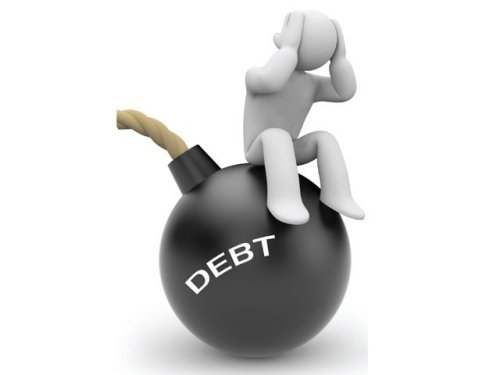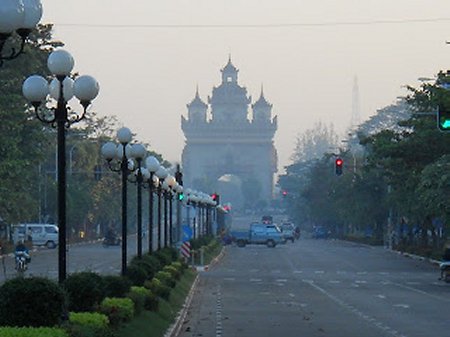Laos, Trying to Build Its Way to an Economic Boom, Could Be Sunk by Debt
Source: World Politics Review
Is Laos on the edge of an economic boom, or a bust? Six of the 11 countries in Southeast Asia have an external debt higher than the developing world average of 26 percent of gross national income, according to a report last year by FT Confidential Research, an independent research service from the Financial Times. Laos was the worst offender, with an external debt of 93.1 percent of its GNI. Laos was also weakest when it came to its ability to repay loans. Its ratio of external debt to exports, an important indicator, was 327.9 percent.
Foreign currency reserves are also in short supply. They were valued at $885 million in March. While slightly up from $873 million in late 2018, the reserves account for just over one month’s worth of imports. In early 2017, the International Monetary Fund increased Laos’ risk of “external debt distress” from moderate to high.
“If we don’t borrow,” Prime Minister Sisoulith Thongloun told the Nikkei Asian Review in May, “Laos, as a least developed country, won’t develop further.” He told the same newspaper last year that he was “not concerned much about the burden of debt.”
Thongloun is partly correct to conflate his country’s economic growth with its borrowing. The World Bank’s latest economic update on Laos, released in August, projects economic growth to recover to 6.5 percent this year, up from 6.3 percent in 2018. This uptick is the result of “robust growth in the construction sector, driven by strong investment inflows to large infrastructure projects.” Indeed, the construction sector, which is dependent on credit, accounts for 32 percent of GDP, while other traditional areas of the economy—namely mining and agriculture—are diminishing. Profits from its mining sector, which made up 45 percent of all exports until recently, are falling as international commodity prices slump.
But how much spending on construction and infrastructure is actually productive, rather than being siphoned off by widespread corruption? As Deputy Prime Minister Bounthong Chitmany explained to a session of the National Assembly in October 2017, “The real cost of building a one-kilometer length of road is only $400,000, but the government ends up paying $1.7 million. $1.3 million is lost.” This is, no doubt, not the most accurate estimate, but the suggestion that almost three-quarters of construction costs are lost to corruption would raise questions about the actual numbers behind Laos’ construction-led model for economic growth.
More worrying is that the government seems to be planning for today, rather than tomorrow. Its economic plans depend largely on trade relations staying as they are. And it has invested billions in energy production—aiming to become the “battery of Asia” by building dozens of hydroelectric dams—without hedging its bets by considering what energy markets and technology might look like in a decade or two. The opening of the huge Xayaburi dam in northern Laos at the end of this year—the first hydroelectric dam on the main branch of the Mekong River in Southeast Asia—will add an extra 2,200 megawatts of energy to the national grid, a fifth of the overall output expected by 2020, the majority of which Laos’ government wants to export. There are around 50 hydropower plants operational at the moment, and about the same number set to be completed by 2020. The government’s faith in becoming Southeast Asia’s chief energy provider is unimpeded even by the collapse of Xe-Pian Xe-Namnoy dam last year, which left dozens dead and thousands still homeless.
Laos aims to generate $1.45 billion this year by exporting energy, and based on current projections, Thailand will import 20 percent of its energy from Laos by 2036, up from 7 percent in 2015. Vietnam expects to import 58.5 percent of its energy by 2035, mostly from Laos. But Bangkok has also recently shown interest in nuclear power, and Hanoi is investing more into its own renewable energy sources. The next generation of solar panel technology could make hydropower less appealing for its costs and efficiency.
Adam Brak, a research assistant at Global Food and Water Crises Research Program, noted last year that, “despite currently booming energy requirements for the growing populations surrounding Laos, hydroelectricity may not be as profitable an export in 20 years.” Many of the foreign-funded hydropower dams, moreover, have been built under what is known as a “build, operate and transfer” model, in which private firms will control the dams for a number of years—many around 20 years—before handing them over to the state. But, as Brak warned, that means Laos will “inherit maintenance and upgrade costs previously carried by private operators” at a time when “it is likely that alternative energy sources and hybrid renewable-energy projects will offer more cost-effective and perhaps more efficient sources of electricity.”
A similar long-term problem exists with the multi-billion dollar railway being built to connect Laos with China. A considerable sum, $6.7 billion, has already been invested, mostly from Chinese backers; Laos is providing about a tenth of the budget. The government reckons that, once the railway is complete, it will lead to a boom for the country’s export sector. There is some sense to this prediction, since almost all of Laos’ exports head to China. Despite the European Union being Laos’ fourth-biggest trading partner, bilateral trade was worth less than $500 million last year—less than half of its trade with Vietnam, and about a sixth of its trade with China. But this simply commits Laos to maintaining China—hardly the world’s greatest purchaser of other people’s manufactured goods—as its largest export market, and at a time no less when other Southeast Asian nations are desperate to diversify their trade away from China.
Laos’ lack of a real export sector, especially when compared to its neighbors, is compounded by the government’s reliance on energy and infrastructure, and its neglect of other parts of the economy. Put simply, the government has put all its eggs in one basket. Tax collection, for instance, actually fell to 11.2 percent of GDP last year, down from 12 percent in 2017, according to government figures. Small and medium-sized enterprises account for 99 percent of all registered firms in Laos but still just a fifth of GDP, compared to two-fifths of GDP in Thailand. Tourism numbers are up 5 percent this year, but that will probably disappoint officials who put in a massive effort to boost visitor numbers from China and Vietnam.
With all this construction, from the dams to the railway, there are naturally concerns about the country’s debt. But despite coverage and commentary about the risk of Laos falling into a “debt trap” laid by China, it is the Lao government that has saddled the country with debt through its own bet on megaprojects that could turn into white elephants.




